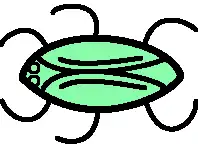Axayacatl (insect)
Axayacatl [ɑʃɑˈjɑkɑt͡ɬ] and its plural, āxaxayacatl [ɑːʃɑʃɑˈjɑkɑt͡ɬ] (the plural form is not commonly used in daily Nahuatl) are the two common names of pre-Hispanic origin used in Mexico to refer to species of aquatic insects in the family Corixidae, the eggs of which, ahuauhtli ([aˈwawt͡ɬi]), deposited abundantly on rushes (grass-like plants in the Juncaceae family) and flags (species of Iris plant) in lakes and ponds, are collected and sold as a sort of Mexican caviar, as part of Aztec cuisine.[1]

This is a reproduction of the Aztec glyph for the axayacatl, as seen in Book 11 of the Florentine Codex.[1]
Notes
- McDavitt, M. (n.d.). The astonishing axacayatl. Mexicalore. Retrieved September 10, 2012, from link
References
- This article incorporates text from a publication now in the public domain: Rines, George Edwin, ed. (1920). . Encyclopedia Americana.
External links
- Julieta Ramos-Elorduy, “Threatened edible insects in Hidalgo, Mexico and some measures to preserve them.” Journal of Ethnobiology and Ethnomedicine, 4 December 2006.
This article is issued from Wikipedia. The text is licensed under Creative Commons - Attribution - Sharealike. Additional terms may apply for the media files.